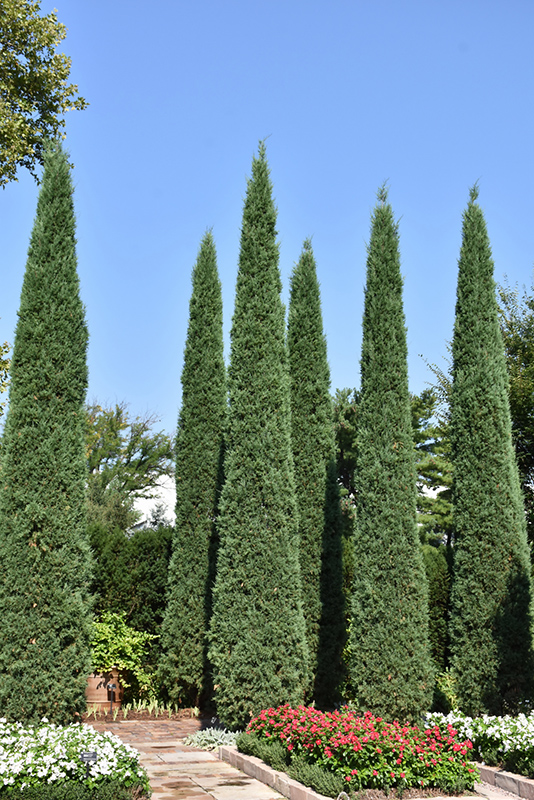Taylor Redcedar
Juniperus virginiana 'Taylor'
Height: 20 feet
Spread: 4 feet
Sunlight:
![]()
Hardiness Zone: 4
Description:
When you just have to have that exclamation point in your landscape, this is it - a pencil-thin columnar evergreen with grayish-green foliage held in a distinctive way; best used with a specific purpose or design in mind, can be used as a formal hedge
Ornamental Features
Taylor Redcedar is a dwarf conifer which is primarily valued in the landscape for its rigidly columnar form. It has attractive grayish green evergreen foliage. The scale-like sprays of foliage are highly ornamental and remain grayish green throughout the winter.
Landscape Attributes
Taylor Redcedar is a multi-stemmed evergreen shrub with a narrowly upright and columnar growth habit. It lends an extremely fine and delicate texture to the landscape composition which can make it a great accent feature on this basis alone.
This is a relatively low maintenance shrub, and is best pruned in late winter once the threat of extreme cold has passed. Deer don't particularly care for this plant and will usually leave it alone in favor of tastier treats. It has no significant negative characteristics.
Taylor Redcedar is recommended for the following landscape applications;
- Accent
- Vertical Accent
- Hedges/Screening
- General Garden Use
Planting & Growing
Taylor Redcedar will grow to be about 20 feet tall at maturity, with a spread of 4 feet. It has a low canopy, and is suitable for planting under power lines. It grows at a medium rate, and under ideal conditions can be expected to live for 70 years or more.
This shrub should only be grown in full sunlight. It is very adaptable to both dry and moist growing conditions, but will not tolerate any standing water. It may require supplemental watering during periods of drought or extended heat. It is not particular as to soil type or pH. It is highly tolerant of urban pollution and will even thrive in inner city environments. Consider applying a thick mulch around the root zone in both summer and winter to conserve soil moisture and protect it in exposed locations or colder microclimates. This is a selection of a native North American species.


